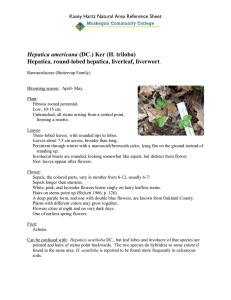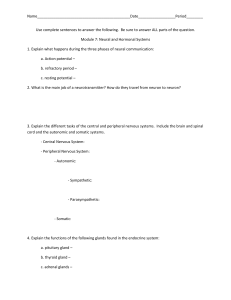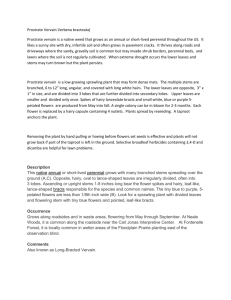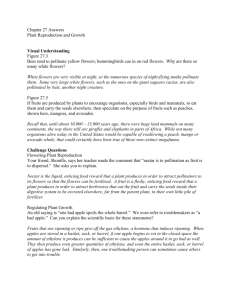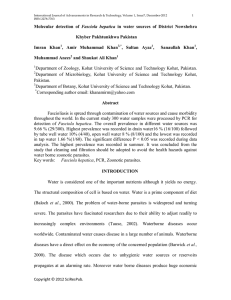Hepatica acutiloba Hepatica, sharp-lobed hepatica, liverleaf, liverwort
advertisement
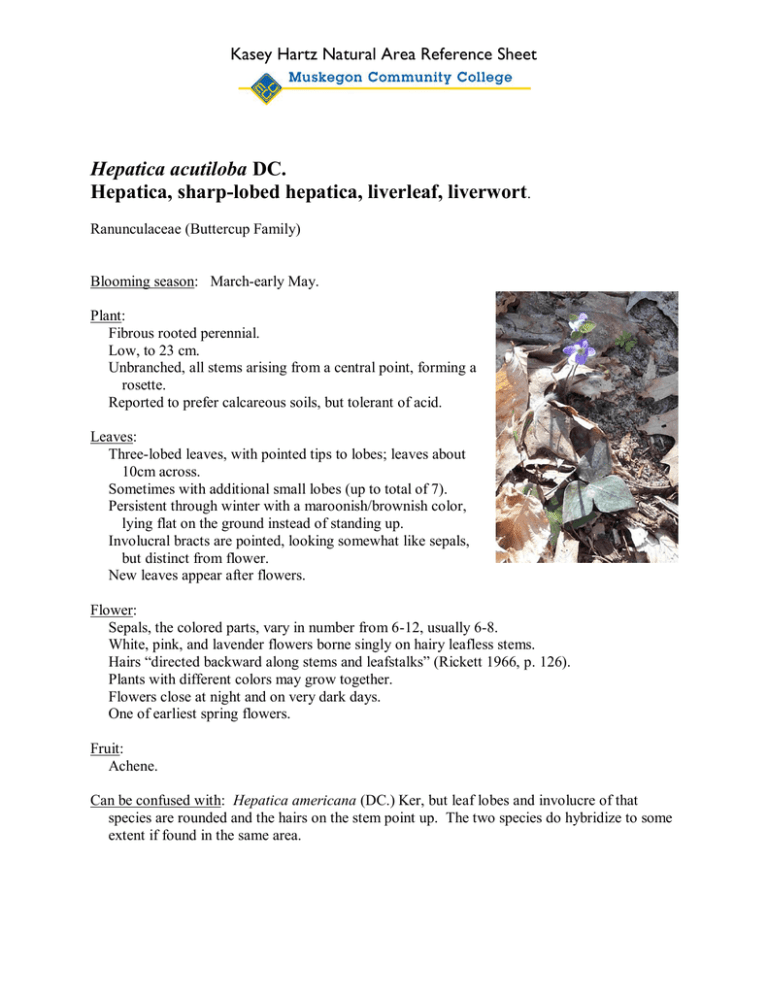
Kasey Hartz Natural Area Reference Sheet Hepatica acutiloba DC. Hepatica, sharp-lobed hepatica, liverleaf, liverwort. Ranunculaceae (Buttercup Family) Blooming season: March-early May. Plant: Fibrous rooted perennial. Low, to 23 cm. Unbranched, all stems arising from a central point, forming a rosette. Reported to prefer calcareous soils, but tolerant of acid. Leaves: Three-lobed leaves, with pointed tips to lobes; leaves about 10cm across. Sometimes with additional small lobes (up to total of 7). Persistent through winter with a maroonish/brownish color, lying flat on the ground instead of standing up. Involucral bracts are pointed, looking somewhat like sepals, but distinct from flower. New leaves appear after flowers. Flower: Sepals, the colored parts, vary in number from 6-12, usually 6-8. White, pink, and lavender flowers borne singly on hairy leafless stems. Hairs “directed backward along stems and leafstalks” (Rickett 1966, p. 126). Plants with different colors may grow together. Flowers close at night and on very dark days. One of earliest spring flowers. Fruit: Achene. Can be confused with: Hepatica americana (DC.) Ker, but leaf lobes and involucre of that species are rounded and the hairs on the stem point up. The two species do hybridize to some extent if found in the same area. Kasey Hartz Natural Area Reference Sheet Hepatica acutiloba DC. Hepatica, sharp-lobed hepatica, liverleaf, liverwort 2 Geographic range: Type specimen location: State: Throughout the Lower Peninsula; central and far western portions of the Upper Peninsula. Regional: Nova Scotia to Manitoba, south to Florida, Alabama, Missouri. Habitat: Local: rich woods Regional: “Almost entirely restricted to beech-maple woods” and in rich soils (Voss 1985, p. 211); generally less acid soils than H. americana. Common local companions: Maples and beech. Usages: Human: Native Americans used preparations of various parts of the plant for labor pains and as a contraceptive; as an astringent; in making a tea for coughs; as an emetic and laxative; and as a febrifuge. The roots were chewed as a cough suppressant. Other animal: The plant depends on bees and flies for pollination. Why is it called that? According to the “doctrine of signatures”, which originated in China, this plant was named for the liver, hepaticus in Greek because of its lobed leaf. Acutiloba is Latin for pointed lobes, providing a description of the leaf. Prepared by: Barbara Lukacs Grob April 2008
